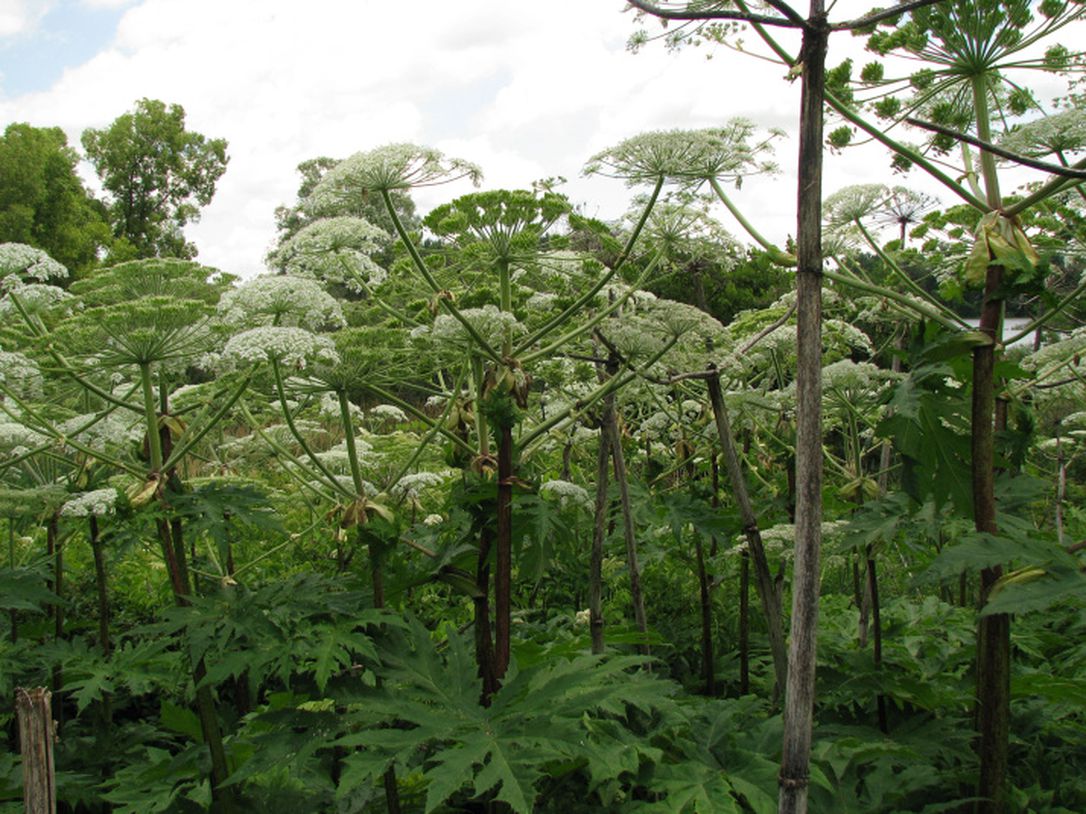
Within Ontario, there are many invasive species, but nothing like the giant hogweed (Heracleum mantegazzianum). Giant hogweed made its way to North America as an ornamental garden plant. Since it has no insect pests or diseases, the plant ended up getting into our ecosystem, threatening all of our natural plants and even us.
It can be found along roadsides, woodland areas, fields, ditches, and streams.
The giant hogweed can grow up to three to five meters or 10-16 ft, and can take 15 years to grow. The plant grows a rosette of leaves that are notably spiked with a jagged appearance that could reach one meter high during its first year, then it will grow flowers which are a whitish colour that can be seen in mid-June.
The stem is thick and hollow with coarse hair and could be completely purple or have purple spots. It can be 10-15 centimetres in diameter. The giant hogweed produces around 50,000 winged seeds and when dropped, they can spread up to 10 meters by the wind.
The sap produced is harmful to us. It can be found in the hair on the stem and at the bases of the hollow stem. The sap contains toxins that cause severe inflammation to the skin. Severe burns could be caused if the sap is exposed to the sun. Painful blisters are the main symptoms and occur within 48 hours.
If the sap were to get into contact with your eyes, it could potentially cause temporary or permanent blindness. Purplish burn scars could last for years.
Evidence shows that the giant hogweed can block the sun from other plants. In the United Kingdom, the giant hogweed grows in wetlands and on river banks causing rocks and other plants to fall into the rivers threatening the salmon found in the waterways.
So the next time you are out for a walk, make sure you keep an eye out for the giant hogweed.

